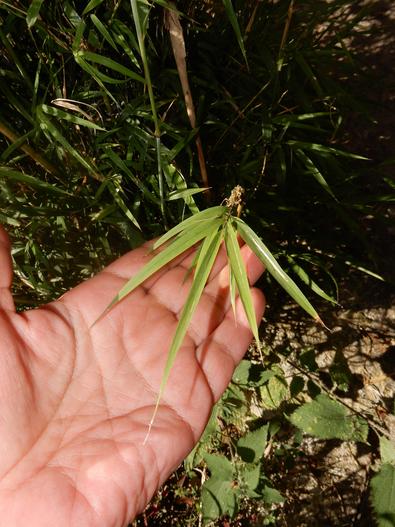Himalayan Weeping Bamboo
(Drepanostachyum falcatum)
Himalayan Weeping Bamboo (Drepanostachyum falcatum)
/
/

Seema Merchant
CC BY 4.0
Image By:
Seema Merchant
Recorded By:
Copyright:
CC BY 4.0
Copyright Notice:
Photo by: Seema Merchant | License Type: CC BY 4.0 | License URL: http://creativecommons.org/licenses/by/4.0/ | Occurence ID: https://www.gbif.org/occurrence/4442447539 | Publisher: Inaturalist |





Estimated Native Range
Summary
Drepanostachyum falcatum, commonly known as Himalayan Weeping Bamboo, is an evergreen perennial grass native to the understory of temperate forests in the Himalayas and Southeast Asia. It typically grows to a height of 8-11 feet (2.4-3.4 meters) and a width of 3 feet (0.9 meters), featuring gracefully arching culms and delicate, feathery foliage that creates a soft, weeping effect. The plant’s appearance is characterized by its slender, green canes that turn yellow with age, and its fine-textured leaves that add a light, airy quality to the garden landscape.
Himalayan Weeping Bamboo is valued for its elegant form and movement in the breeze, making it a popular choice for creating a focal point in Asian-themed gardens or as a natural screen for privacy. It is also used in containers for patios and decks. This bamboo prefers a sheltered position with protection from harsh winds. It thrives in partial shade to full sun, with consistent moisture and well-draining soil. While it is less invasive than some other bamboo species, it should be monitored to prevent unwanted spread. Regular pruning can maintain its weeping habit and overall health.CC BY-SA 4.0
Himalayan Weeping Bamboo is valued for its elegant form and movement in the breeze, making it a popular choice for creating a focal point in Asian-themed gardens or as a natural screen for privacy. It is also used in containers for patios and decks. This bamboo prefers a sheltered position with protection from harsh winds. It thrives in partial shade to full sun, with consistent moisture and well-draining soil. While it is less invasive than some other bamboo species, it should be monitored to prevent unwanted spread. Regular pruning can maintain its weeping habit and overall health.CC BY-SA 4.0
Plant Description
- Plant Type: Grass
- Height: 6-20 feet
- Width: 1-3 feet
- Growth Rate: Slow
- Flower Color: N/A
- Flowering Season: Non-Flowering
- Leaf Retention: Evergreen
Growth Requirements
- Sun: Full Sun, Part Shade
- Water: Medium
- Drainage: Slow, Medium
Common Uses
Edible*Disclaimer: Easyscape's listed plant edibility is for informational use. Always verify the safety and proper identification of any plant before consumption., Erosion Control, Low Maintenance
Natural Habitat
Understory of temperate forests in the Himalayas and Southeast Asia
Other Names
Common Names: Ringal, Himalayan Bamboo, Blue Bamboo
Scientific Names: , Bambusa gracilis, Arundinaria falcata, Drepanostachyum falcatum, Sinarundinaria falcata, Chimonobambusa falcata, Drepanostachyum falcatum var. sengteeanum, Arundinaria interrupta, Arundinaria falcata var. glomerata, Arundinaria gracilis
GBIF Accepted Name: Drepanostachyum falcatum (Nees) Keng f.